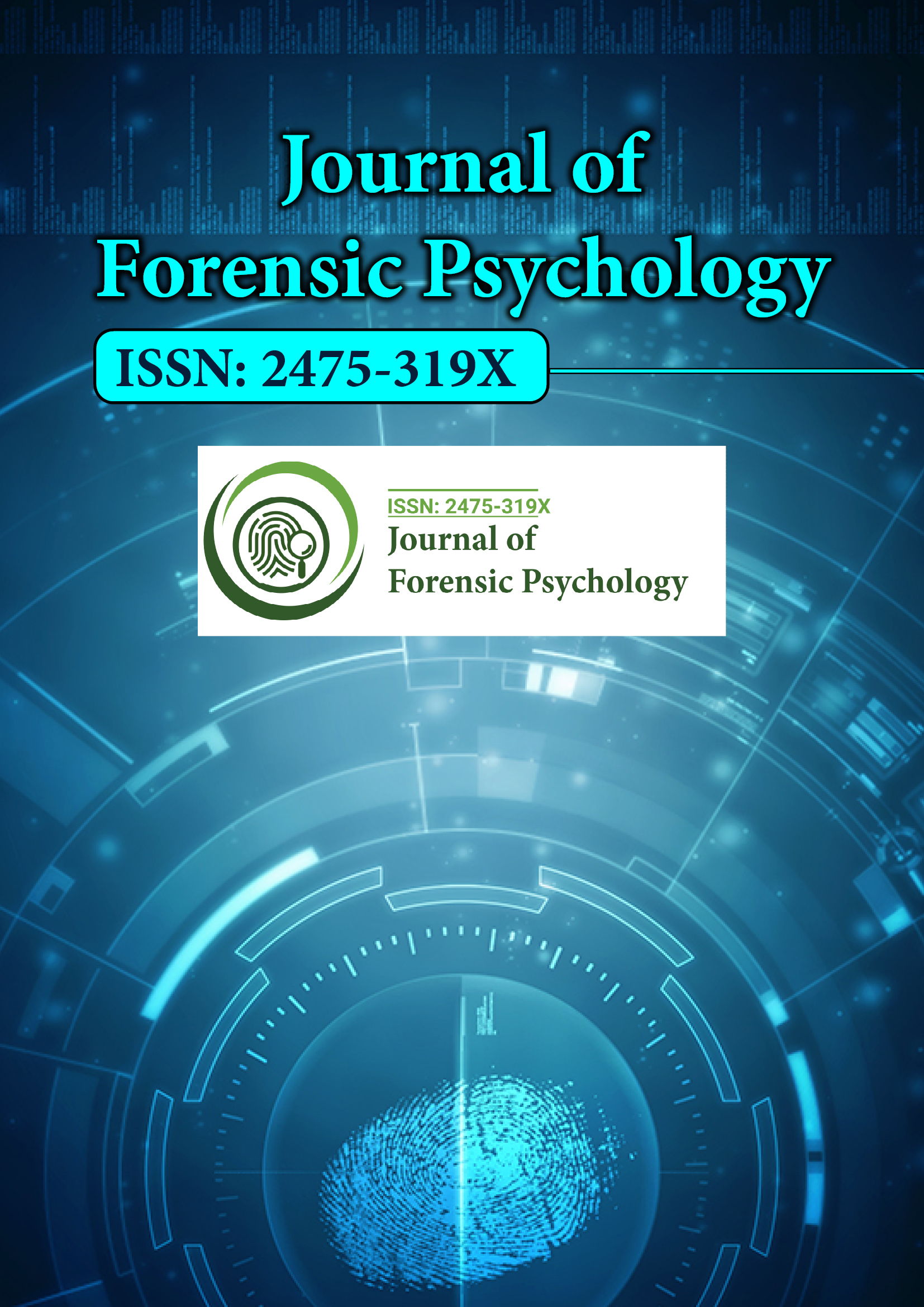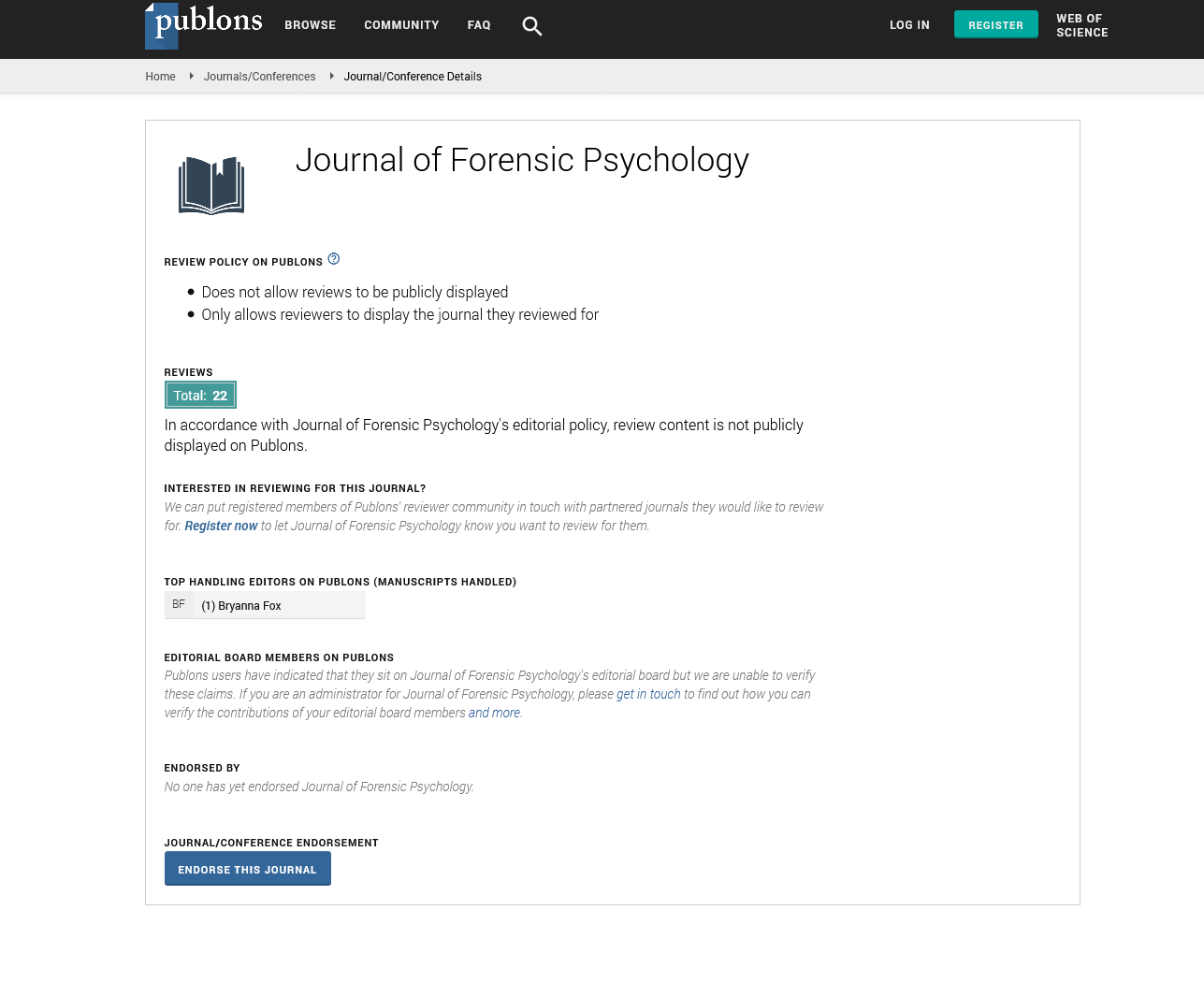Indexed In
- RefSeek
- Hamdard University
- EBSCO A-Z
- Publons
- Geneva Foundation for Medical Education and Research
- Euro Pub
- Google Scholar
Useful Links
Share This Page
Journal Flyer

Open Access Journals
- Agri and Aquaculture
- Biochemistry
- Bioinformatics & Systems Biology
- Business & Management
- Chemistry
- Clinical Sciences
- Engineering
- Food & Nutrition
- General Science
- Genetics & Molecular Biology
- Immunology & Microbiology
- Medical Sciences
- Neuroscience & Psychology
- Nursing & Health Care
- Pharmaceutical Sciences
Commentary - (2022) Volume 7, Issue 3
Application of Environmental Criminology to Reduce Cybercrime
Merididth Wilson*Received: 28-Feb-2022, Manuscript No. JFPY-22-16251; Editor assigned: 02-Mar-2022, Pre QC No. JFPY-22-16251(PQ); Reviewed: 16-Feb-2022, QC No. JFPY-22-16251; Revised: 21-Mar-2022, Manuscript No. JFPY-22-16251(R); Published: 28-Mar-2022, DOI: 10.35248/2475-319X.22.7.213
Description
The environmental criminology concepts have served to understand the situational aspects of crime events and propose strategies for their prevention for years. There are three key environmental criminology theories: The routine activity approach, whose most popular evidence is that crime occurs at the micro level in the absence of capable guardians when an inspired offender and an appropriate target converge in space and time; the geometry of crime, which assumes that the distribution of crime events is not random, but occurs in places where the activity spaces of offenders and targets intersect and the rational choice perspective, which defines that the criminals' decision to commit a crime reflects an allowance of costs and advantage. An important benefit of these mid-range theoretical bodies over grand theories is their simple preparation, which has resulted in logical frameworks that contribute to a better understanding of crime, such as the crime triangle or the repeat victimization premises. The application of these frameworks has always been heavily influenced by the geography of crime, but their potential scope has yet to be exposed for crimes committed in cyberspace.
The pre-digital context in which the environmental criminology theories were considered meant their growth was essentially geographical, as little was known about cybercrime at that time. The increase of cybercrime as a problem has caused some scholars who earlier focused on geographic crime to pay extra attention to crime in cyberspace. This change in focus has helped to theoretically develop the frameworks of environmental criminology theories into cybercrime. In this context, whereas some consider that the structural characteristics of cyberspace— the contraction of time and space—complex the application of environmental theories, others consider that they simply need to be modified to the particularities of the environment.
Since then, dozens of observed studies have been conducted on the application of environmental theories to understand the dynamics of different forms of cybercrime. The balanced choice perspective was also applied to cybercrime when Newman and Clarke (2003) turned the emphasis of their analysis to ecommerce crimes. Then, situational crime deterrence strategies have been applied to different contexts such as those stated by stolen data markets, or financial cybercrimes, among many others. Generally, both the routine activity tactic and the rational choice perspective have received attention from academics in the last decade and have therefore progressed and contributed to the development of the discipline.
But when it comes to the geometry of crime, there are but few discoveries that apply this theory to cybercrime prevention. This is perhaps because this theory depends to a great level on the concept of place, which is usually associated with a physical space. However, it has been debated that cyber places can be understood as digital spaces of junction where offenders also interact with the environment that describes crime opportunities.
Conclusion
This reasoning displays that not all concepts within environmental criminology are geographical, as some are just spatial, like hot spots. Crime hot spots, which are the result of the frequent occurrence of crime events in a given place and over a certain period of time, have usually been measured in physical space, but such concentrations can also be observed in crimes occurring in cyberspace. For example, there may be certain web domains that are more disposed to to victimization by defacement than others and there may be certain time frames in which the activity of defacers is more intense. In this case, spatiotemporal hot spots of cybercrime will be formed in those cyber places or areas that are repeatedly defaced. What is unknown to date is whether the theory behind repeat victimization is also appropriate in cyberspace.
Citation: Wilson M (2022) Application of Environmental Criminology to R educe Cybercrime. J Foren Psy. 7:213.
Copyright: © 2022 Wilson M. This is an open-access article distributed under the terms of the Creative Commons Attribution License, which permits unrestricted use, distribution, and reproduction in any medium, provided the original author and source are credited.

